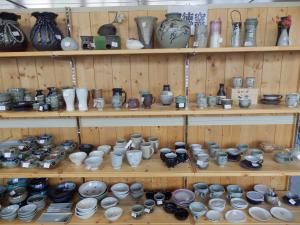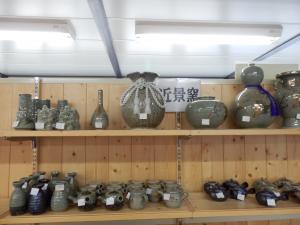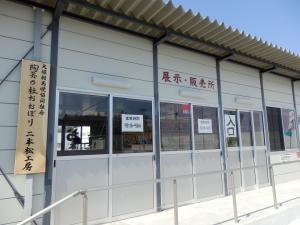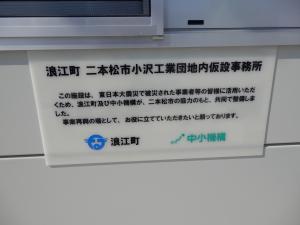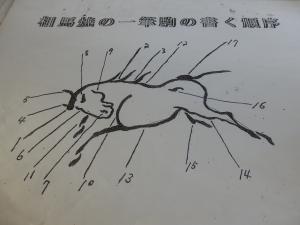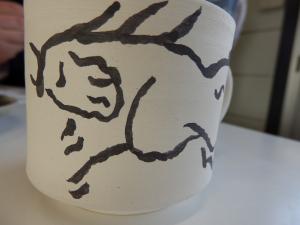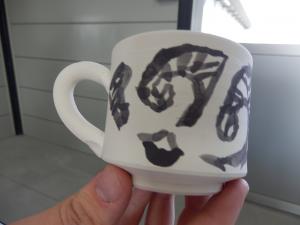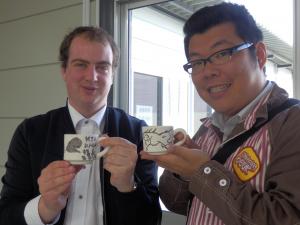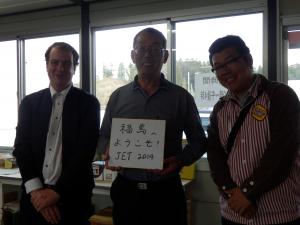NAKA07(Nihonmatsu-city): From Nihonmatsu with Love(HAMA、NAKA、AIZU!)
Have you ever felt the 'importance' of craft products? While you might feel that coffee cups and plates are just everyday household items, try taking a closer look. Not only the shape and patterns, but even the smallest crack can often contain information on the potteries where products were made, and also on the craftsman's thought process during production. Ōbori Sōma-yaki is a type of pottery produced throughout the Ōbori district in Namie Town, Fukushima Prefecture. It is characterized by a stylized horse motif, blue cracks in the pottery, and a multi-layered structure. It boasts a 324 year history since its beginning in 1690. In order to deepen our understanding of this craft product representative of Fukushima, we visited the Ōbori Sōma-yaki Cooperative, where the Chairman, Mr. Hangai, was kind enough to provide us with an interview.
Through Mr. Hangai's introduction, we learned that while Soma Koma-yaki, another type of Soma-yaki, was presented as tribute to the Soma feudal lord, Ōbori Sōma-yaki was enjoyed by common folk. However the Ōbori Sōma-yaki Cooperative was forced to evacuate after the accident at the Nuclear Power Plant, and being unable to continue production, had no choice but to suspend operations. 'If it had just been the earthquake we might have been able to recover. However the Nuclear Power Plant accident ripped the very foundations of our lives away from us. We lost everything including our community. We couldn't repair things even if we wanted to.' Mr. Hangai shared his bitter memories of the disaster with us. Fortunately, thanks to cooperation from the government, and Fukushima's own Nihonmatsu City, they were able to resume production at a workshop located in an industrial park in Nihonmatsu City. William and myself had actually visited the workshop before as interpreters, and memories of the wonderful pottery on display were still fresh in our minds. Mr Hangai reflected on the workshop's completion. 'To be honest, the hardest time for us was until the workshop was completed. It really helped that the government put in the effort to help get it up and running as soon as possible.' After the interview, we tried our hands at painting our own Sōma-yaki coffee cups. Respecting tradition, I decided to attempt painting the horse motif, one of the symbols of Sōma-yaki. As the workshop had a guide on the stroke order, I managed to finish ok, even though it had been a long time since I had picked up a brush. (I can't comment on the quality though...)
William attempted painting a traditional Maori(the indigenous people of New Zealand)pattern. A combination of Japanese and western culture.
Finally, Mr. Hangai told us about the current situation of Ōbori Sōma-yaki. Apparently, since the workshop was completed, orders flooded in from all over the country. While knowing that this was a special kind of demand related to the disaster recovery, the workers put all their effort into producing the newly restored Ōbori Sōma-yaki. Nowadays however, as we are entering the 4th year since the disaster occurred, such large orders have slowed to a trickle. 'This is something we had foreseen since the beginning. All we can do now is keep working to fill the orders we have.' While the drop in orders is somewhat discouraging, I felt that the workers resolve to keep working shows their strong belief in their craft. I believe that this a great part of the 'importance' of Ōbori Sōma-yaki. From Nihonmatsu with love, the Ōbori Sōma-yaki workers are striving to protect tradition to this day. |
